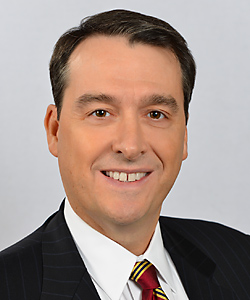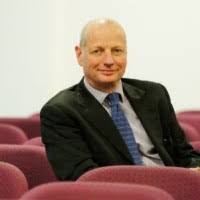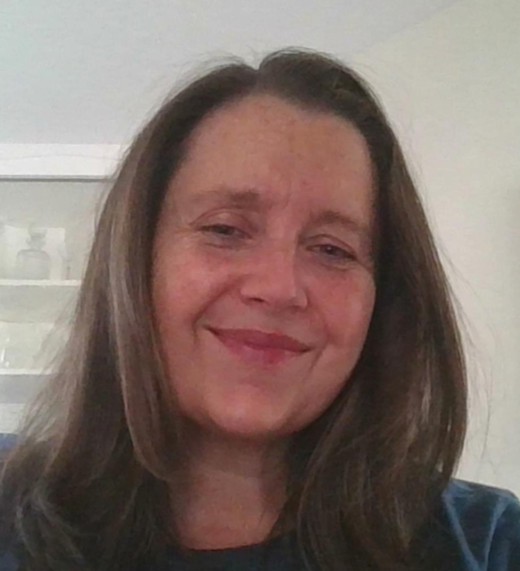Myles never imagined a career in technology. As a teenager in Spring Lake, New Jersey—two blocks from the beach—he cared more about perfecting his tennis backhand than programming. College brought him to Furman University in South Carolina: “I was very, very serious about playing tennis,” he recalled. Four hours of tennis a day, eight months a year, was “heaven” for Myles. His focus outside the court? Accounting—not because he dreamed of budgets and ledgers, but because, as he admitted with a laugh, “You don’t write essays in accounting, and I didn’t like writing essays.”

From accountancy to technology
His professional journey began in 1987 with PricewaterhouseCoopers (PwC), in auditing. PwC was launching a new practice around packaged software, or what we’d now call ERP. They needed people with an accountancy background to join the practice. After a last-minute five-month tennis detour in Europe, Myles found himself being recruited into consulting. He had absolutely no computer skills, confessing, “I’d never hit a computer key in my life.” In a funny twist of fate, that first job marked his entry into tech.
Becoming a ‘fixed asset’ guru
Training was a far cry from today. “We were in a small room—four terminals, no instructor, no manuals—just one guy who sort of knew what he was doing.”
Within weeks, Myles was assigned to implement a fixed asset system at a manufacturing client. Armed with some notes and after a week of shadowing a more experienced consultant, at the tender age of 22, he was left on his own to manage a massive project. He visited numerous plants where people pelted him with questions. Myles thought he’d be fired and was sure he’d reached the end of the line when he failed a pop quiz with the head of IT. But another unexpected turn changed his fate: the head of IT was replaced by a kind mentor, who taught Myles what he needed to know about fixed assets. The project was successful and after that, Myles became the firm’s “expert” in fixed assets.
Becoming a globetrotting data guy
Myles’ career continued to grow, following the road less taken. PwC sent him to Tokyo for two and a half years one of the firm’s first global projects, a global general ledger at Salomon Brothers. From there, he moved to London to manage huge ERP implementations at global banks like Union Bank of Switzerland. A chance encounter in London with a dedicated team building data warehouses sparked something inside him. “I was really interested in what this data warehousing stuff was all about.”
Soon, JP Morgan came recruiting, offering him two roles: one in traditional finance tech, and another designing data warehouses in asset management—a less-defined path, but one that would let him work closely with the business. He chose the latter. “Over the next seven years, we did three big data warehouses, building them out module by module. Our design became the bible for analyzing customer and product profitability.”
JP Morgan sent him to Hong Kong to head up finance technology, rolling out Oracle ERP to 15 country operations. Along the way, he met and married his wife and started a family. After Hong Kong, he led JP Morgan’s global data warehouse project in New York, with hundreds of interfaces powering the company’s reporting. When it came to getting an accurate picture of P&L, the expenses in the general ledger are insufficient; they didn’t align with the way revenue was absorbed. The challenge was to align the cost of delivering services to the usage of those services. Myles explained, “I was the data warehouse guy, and there was another person on the team who specialized in activity-based costing. Together, we made sure every single dollar of expense from the general ledger made it into that data warehouse, and it was tagged with a product and a client.”
Myles continued, “That use case stuck with me. It was super tangible. The CEO of the asset management business carried our report around with him. When people would say, ‘You know, my margin is 15%,’ he would pull it out and say, ‘Actually, no, it’s not—and I can tell you why.’”
Telling stories with data
Yet Myles’s true love was analytics: “Bringing data together, answering business questions—that was what I found really interesting. Everyone’s going to have ERP to automate business processes. But are people going to be using data for analytics to really transform the business, to do things differently? I sensed an increase in the importance of data and analytics.”
In 2009, he implemented Oracle BI Applications at a medical equipment manufacturing company in Texas, building interactive dashboards and integrating them with Salesforce—a project that shifted the company from heavy data engineering to truly visual analysis. “That’s when I saw the power of visuals and data storytelling—shifting from reporting to drilling down, answering the questions people really had.”
The shift to cloud
Since 2016, Myles has been appointed to senior roles in the analytics practice at the leading Oracle partner Apps Associates and is currently Vice President of Data, Analytics, and AI. He’s worked on numerous projects, seeing Oracle Analytics technology evolve, move to the cloud, and mature. At an electronics manufacturing client, he first experienced using Oracle Autonomous Data Warehouse (ADW) with Analytics Cloud (OAC). Myles explains, “We did finance, procurement, and supply chain analytics. We also integrated data from Oracle Planning and Budgeting Cloud and built a large number of dashboards that have gone over really well.” Since then, Myles’s team completed around 20 Oracle Fusion Data Intelligence implementations—Oracle’s prebuilt cloud analytics application for Oracle Cloud Fusion Applications.
Harnessing the power of AI
His fascination with technology goes further: “I love AI, I love ChatGPT. I had a 45-minute conversation with ChatGPT over the weekend, learning about neural networks. If only I’d had that back when I started!”
Having worked a little with the Oracle AI Assistant against subject areas in OAC, he sees the future in natural language conversations with data. “Imagine simply asking, ‘Why are sales down in the Southeast?’ and getting a trustworthy answer, visualized and explained by analytics AI.” He acknowledges that data sources aren’t yet built to make AI easy, to get Large Language Models to generate the exact right SQL from an English question. But, “it’s the most natural thing. Who would not want a natural conversation where you could ask probing questions about your business? We’re not there yet, but we’ll get there.” He’s convinced that visual analytics and natural language interfaces are converging, making the cloud a true “wizard behind the curtain”—not just running infrastructure, but actually delivering answers to business questions.
Being curious and willing to try new things
Through it all, Myles’s approach to technology was grounded in curiosity and a willingness to leap at opportunities—even, perhaps especially, when he felt underprepared. His belief in following one’s interests runs deep: “You may not know exactly where it’s going to lead, but if you pursue something you’re genuinely interested in, you’ll learn about it, get good at it, work well with others.” He offers the same advice to his children: don’t force yourself into something just because it pays well or seems prestigious. Find your foothold in what naturally draws you in.
Success for Myles is about evolution and teamwork. “I love helping people do tasks better, make things easier, get answers more easily.” He views his story as proof that sometimes the person with “none” listed for computer skills—the accidental expert with imposter syndrome—ends up connecting the dots that drive real change.
His advice, in three words: “Take the chance.” Even when you don’t feel ready—especially then. Because that’s when epic, unpredictable, and very human stories unfold.
Learn more about Myles and Apps Associates, and you can always ask questions in the Oracle Analytics Community.

